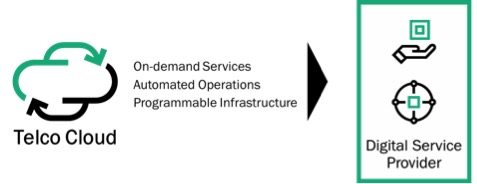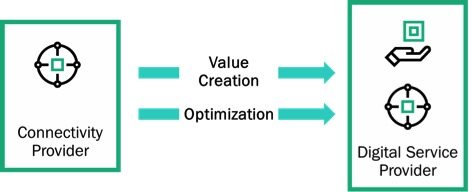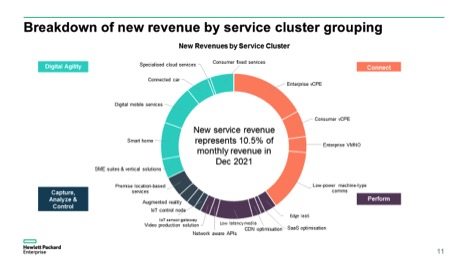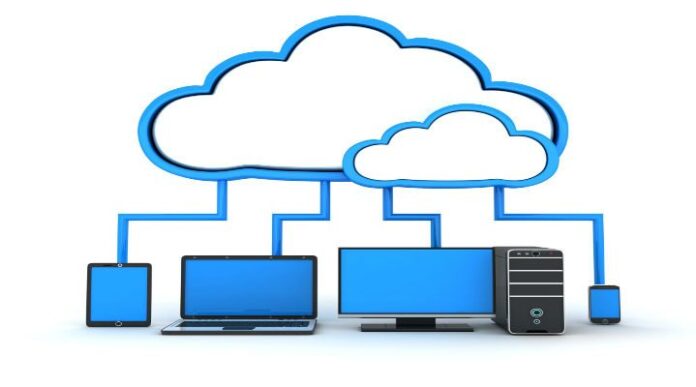Hewlett Packard Enterprise lays out reasons why the telco cloud is set to provide new opportunities for CSPs
For years, the largest communications service providers have relied on wireless service to offset declines in landline voice while still providing modest revenue growth. Those days may finally be coming to an end.
With over-the-top players having jumped into the game, the economics of wireless services will never be the same. And of all the offers being dished out by these players, one-off packages are causing the most harm. Look at Google’s Fi, a $20-per-month all-inclusive smartphone plan that leverages Wi-Fi to make calls. In entertainment, Dish Network’s Sling TV allows customers to watch popular programming anytime, anywhere for about the same price. Connectivity isn’t as valuable as it used to be, and as a result, STL Partners estimates global telecoms services revenues will drop from roughly $1 trillion in 2013, to just $700 billion by 2020. CSPs can either change the way they do business, or risk losing over $300 billion in potential revenue. That sort of choice is no choice at all.
Stormy weather, friendly clouds
A new approach is needed to turn this grim choice into a ripe opportunity, one that features not only better infrastructure and operations, but which is also software-defined and automated to maximize efficiency and support delivering new ideas quickly to keep pace with customer demand. We call this platform the telco cloud, and we believe it will forever change the business of delivering communications services.

The shift won’t come easily. At their core, CSP networks are collections of proprietary appliances, custom built for specific applications and managed by custom software – and often provided by a single or few dominant vendors. Although taken together, these systems are the backbone of a very reliable network, Every one of them is an anchor, forcing CSPs to rely on services that don’t provide enough value to command a premium. Continued declines are all but guaranteed for those who don’t make the shift to the telco cloud.
The good news is that many CSPs ARE making the leap. How? They’re gradually virtualizing every element of their existing CSP networks and then bringing in more modern infrastructure to beef up the capabilities of the aging hardware already in place. All of it is then provisioned as software-defined resources and managed through programmable controllers. Where it once took teams of engineers and fleets of trucks dispersed to central offices to instantiate new services, developers tapping into the telco cloud can now do it in a matter of hours.
Key to this shift are two technologies: network functions virtualization and software-defined networking. NFV decouples the network functionality from underlying hardware systems that hosts them. SDN separates the control mechanisms for those network functions from the act of forwarding data. With these two approaches in place, network functions can then be deployed as a cloud and operated and consumed in cloud style practices. Programmable controllers also make it possible to drive much more fine-tuned provisioning and optimization of network connectivity. Taken together, NFV and SDN lets CSP instantiate network functions as and when needed and scaled up and down depending on needs, improving efficiency at a scale that CSPs have never before seen.
4 emerging revenue opportunities
Making better use of assets is important for CSPs that would otherwise be facing years of decline. But the story also doesn’t end there. Major telcos have significant physical assets, including widespread central offices and offer near-ubiquitous access to consumers. Few businesses are better positioned to deliver new services to a greater populace. The telco cloud is their catalyst, a platform that turns a connectivity-slinging CSP into a value-creating digital service provider.

As CSPs move along that continuum to transform from providing connectivity to providing valuable connected services, we see four categories of services that will contribute to revenue growth. We see the transformation to the telco cloud unleashing new services in four categories:
Connect services:
Connect services refer to the optimization of connectivity and networking. Services in this category are similar to existing connectivity and networking services but are delivered and consumed in a more cloud-like way. Network virtualization allows operators to scale up and down the service to meet consumer needs and to add new functionality and features on-demand.
Example: Many operators are already exploring and launching services in this category, and are launching virtual customer premise equipment services.
Perform services:
This category describes services that ensure optimized delivery of content and applications to the consumer; this is particularly important for services that require high bandwidth or low latency. Current broadcast models generate significant lag for applications.
Example: In the future, this could be problematic as many new content services such as broadcast via virtual reality may require high bandwidth and low-latency in order to deliver a viable user experience.
Capture, analyze and control:
This is the final category of network-integrated services. Services within this category are less mature and are often dependent on the implementation of more advanced technologies. They typically involve some form of “smarts” or analytics at the edge of the network. Services can include smarter upload or ingestion of information, analytics applied to uploaded information and real-time instructions at the edge of the network in response to inbound data. This category refers to networks that are “two-way,” with the potential for response and action at the edge of the network; this contrasts with existing networks that are more one-way orientated.
Example: Autonomous vehicles relying on networked data will require response and action in near-real time. If a vehicle has to make a decision, the relay of information from the car to the edge of the network and back again has to be instantaneous. While not all autonomous vehicles will rely entirely on networked data exchange, it serves to easily highlight how important low latency data transfer can be for dynamic “Internet of Things” applications.
Digital agility
Finally, the fully realized telco cloud is digital from the ground-up, capable of delivering unique services anywhere. From smart home monitoring to enabling sophisticated onboard apps for connected cars to cloud-hosted small business suites, at this stage telcos are boosting their margins from applications. Connectivity is the means to a better end, rather than an end unto itself.
We asked nearly two dozen major telecoms to weigh in on their use of the telco cloud and the majority said they’re following this path. They also see growth in the transition.
How much growth? Using existing industry data we modeled the likely base revenue for a converged telco operating in a mature European market such as the United Kingdom. Factoring in a combination of voice, data, managed services and consumer digital products results in roughly $1.6 billion in revenue in 2016, declining to about $1.5 billion by the winter of 2021. Adding gross revenues from new services delivered via the telco cloud improves the total by 10.5%.

A software-defined future
Gains will come slowly and steadily, improving as work to implement the telco cloud continues. Personalized, high-value services will become easier to deliver with each passing year, reaching its apex when the traditional CSP infrastructure is fully digitized.
We’ll measure the difference in orders of magnitude. Today, even the best and most agile global telco can’t offer more than 10 or 20 distinct service packages. With the telco cloud, you could be looking at a service offering that is as unique as your Facebook wall – customized the way you want it. And that could be true for millions of consumers.
The future of telco will be governed by platforms that are software-defined and digital native. For the CSPs losing clients and revenue to more agile and responsive competitors, it can’t get here fast enough.
Bala Thekkedath has spent more than 20 years helping bring to life paradigm-defining telecommunications products. Currently, he serves as Director of Marketing for the Communications Solutions Business at Hewlett Packard Enterprise.
Editor’s Note: In an attempt to broaden our interaction with our readers we have created this Reader Forum for those with something meaningful to say to the wireless industry. We want to keep this as open as possible, but we maintain some editorial control to keep it free of commercials or attacks. Please send along submissions for this section to our editors at: dmeyer@rcrwireless.com.

